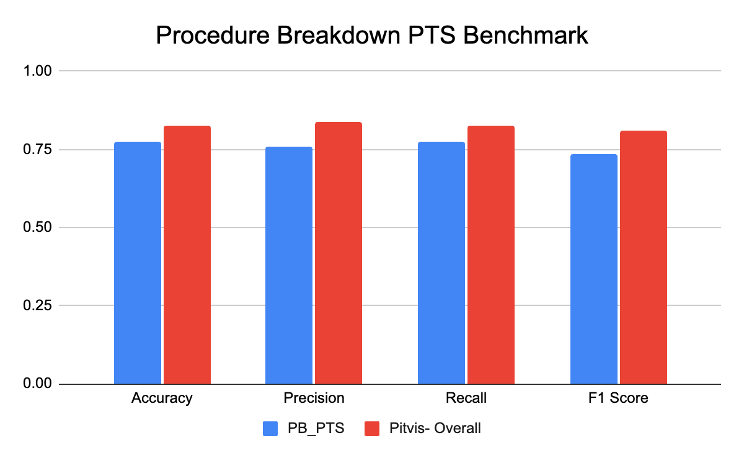
SDSC is helping fellow nonprofit NeuroKids save children's lives and reduce the global burden of hydrocephalus, spina bifida, and shunt-dependence through training, treatment, and research.

NeuroKids uses cutting-edge technology to train surgeons to treat hydrocephalus and
spina bifida around the world, and SDSC is part of their journey. By combining innovative
surgical techniques with machine learning and computer vision technology, SDSC and
NeuroKids are scaling a sustainable solution for underprivileged families in particular, as
hydrocephalus in much of the world is a condition of poverty, often a result of newborn infection
or spina bifida.
History
Over twenty years ago in a small hospital in eastern Uganda, Dr. Benjamin Warf, founder and chairman of NeuroKids, encountered an overwhelming number of children with untreated hydrocephalus, a condition in which fluid builds up in cavities deep within the brain, resulting in immense pressure, head-enlargement, and cognitive impairment. Babies under twelve months old comprise the majority of children in the world with hydrocephalus, and without treatment, most do not survive past age two.
Hydrocephalus is traditionally treated by surgically inserting a shunt (a thin plastic tube) into the brain, allowing fluid to drain through the tube into the abdomen, where it can be absorbed by the body. However, shunts can eventually fail and require more surgery for replacement or revision. Shunt malfunction is especially problematic for children in more rural areas, as their chances of being able to return to the hospital for another operation are slim. The Ugandan hospital saw few children with shunts returning for needed revisions, and the team knew this meant children across the developing world were not surviving shunt failure. This realization drove Dr. Warf to start treating hydrocephalus with ventriculostomy, which made a shunt unnecessary, but had limited success in patients under one year old. To increase success, he pioneered the approach of combining endoscopic third ventriculostomy (ETV) with choroid plexus catheterization (CPC), thereby allowing the fluid to drain while also decreasing the amount of fluid the brain produces.
“Liberating individuals from a lifetime of shunt dependence provides tremendous cost savings to a national health system, a country, a family, and a community, not to mention the livelihood of the children themselves.” - Derek Johnson, CEO, NeuroKids
Since then, ETV-CPC has been performed more than 10,000 times, and the team has trained surgeons from around the world, taking the procedure from this Ugandan hospital to places like Children's National Hospital in Washington, DC. But this one-expert-to-one-apprentice training model cannot scale at the rate needed to make a true global impact.
“The inherent problem with that model was that we were bringing all these people into this little hospital in Uganda… we need to be able to take the training to them and we need to be able to scale this… We're talking about at least 400,000-500,000 new babies every year that develop a very life-threatening condition, and if you’re going to place shunts, then you’re just replacing one condition for another, which is shunt dependency. Our evidence is that 60% of those kids can live shunt-free lives.” - Derek Johnson, CEO, NeuroKids

NeuroKids was created to overcome these limitations by creating remote training and learning opportunities that weren’t available twenty years ago, and weren’t as accessible and affordable even a few years ago. Essential to the mission of NeuroKids is not just training neurosurgeons all over the world to perform ETV-CPC, but also to provide the necessary tools and ongoing support to monitor their skills and progression through data collection and evaluation.
Partnership
These factors make SDSC a natural partner for NeuroKids. So far, NeuroKids surgeons have uploaded 72 procedures and 1,000+ hours of surgical video to the SDSC platform for analysis by our AI models and sharing among surgeons worldwide. In fact, SDSC trained its ETV/CPC models on videos of Dr. Warf himself performing the procedure he created. These videos were already “sitting on the shelf” in many cases and are now being used to their full potential.
The goal is to change the way surgeons learn and improve their skills at ETV-CPC, moving from a one-to-one training model to a one-to-many model. Critically, this collaboration also encourages bi-directional training: surgeons in the developing world provide valuable real-world insights to US surgeons and each other to make everyone better. By combining innovative surgical techniques with machine learning and computer vision technology, SDSC and NeuroKids can help scale a sustainable solution for underprivileged families in particular, as hydrocephalus in much of the world is a condition of poverty, a result of newborn infection or spina bifida.
NeuroKids is now working from sixteen sites around the world in twelve different countries, bringing in data from increasingly diverse contexts. SDSC’s surgical video platform is poised to support this continued growth, both in the distribution of videos and their analysis for technical improvement. Going forward, our partnership hopes to master hydrocephalus treatment and also use AI models to train surgeons to provide lifesaving treatment for other neurological cases such as spina bifida, epilepsy, and brain tumors that affect children all over the world.
“SDSC's vision and initiative to leverage today’s technology and tomorrow’s AI to scale education and support to surgeons around the world are inspiring and exciting. NeuroKids is proud to partner with Dr.Donoho and SDSC” - Derek Johnson, CEO, NeuroKids




